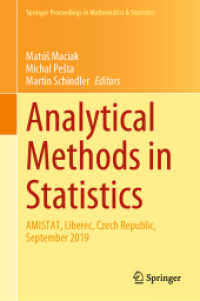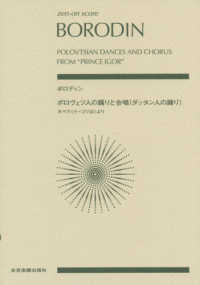Full Description
This critical assessment of the archaeology of the historic city of Winchester and its immediate environs from earliest times to the present day is the first published comprehensive review of the archaeological resource for the city, which as seen many major programmes of archaeological investigation. There is evidence for activity and occupation in the Winchester area from the Palaeolithic period onwards, but in the Middle Iron Age population rose sharply with settlement was focused on two major defended enclosures at St Catherine's Hill and, subsequently, Oram's Arbour. Winchester became a Roman `civitas' capital in the late 1st century AD and the typical infrastructure of public buildings, streets and defences was created. Following a period of near desertion in the Early Anglo-Saxon period, Winchester became a significant place again with the foundation of a minster church in the mid-7th century. In the Late Anglo-Saxon period it became the pre-eminent royal centre for the Kingdom of Wessex. The city acquired a castle, cathedral and bishop's palace under norman kings but from the late 12th century onwards its status began to decline to that of a regional market town. The archaeological resource for Winchester is very rich and is a resource of national and, for the Anglo-Saxon and Norman periods, of international importance.
Contents
Foreword by Martin BiddleList of contributorsList of illustrationsList of tablesAbbreviationsAcknowledgementsSummaryPart 1: Introduction1 An archaeological assessment for WinchesterPart 2: Analysis and synthesis of the archaeology of the study area 2 Winchester in prehistory3 Winchester in the Roman period (c AD 43-c 410)4 Early and Middle Anglo-Saxon Winchester (c 410-c 860)5 Late Anglo-Saxon Winchester (c 860-1066)6 Medieval Winchester (1066-c 1350)7 Late medieval Winchester (c 1350-c 1600)8 Post-medieval Winchester (c 1600-1837) 9 Winchester in the Victorian and modern periods (c 1837-2014)Part 3: An overview of Winchester's archaeology 10 Winchester through the agesAppendix 1: Gazetteer of sites referred to in the text Appendix 2a: UAD Monument gazetteerAppendix 2b: UAD Event/Site gazetteerBibliographyIndex








